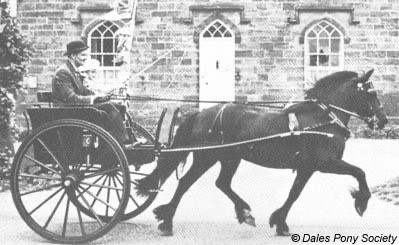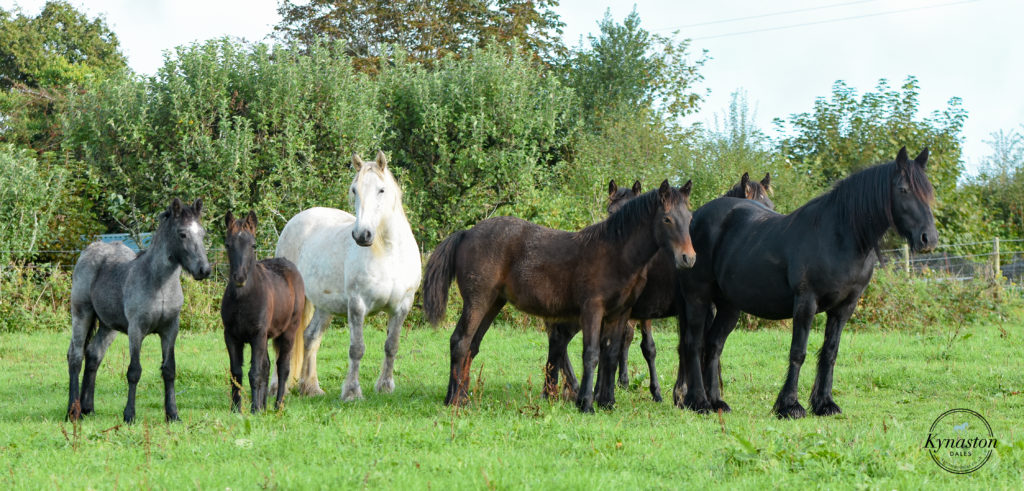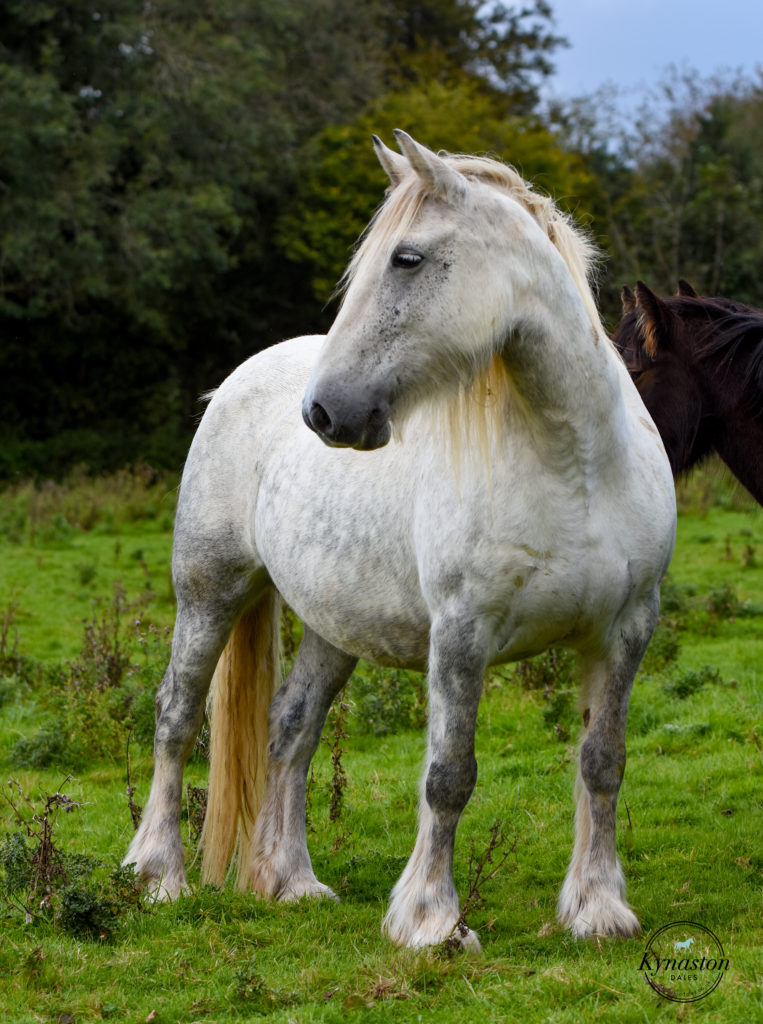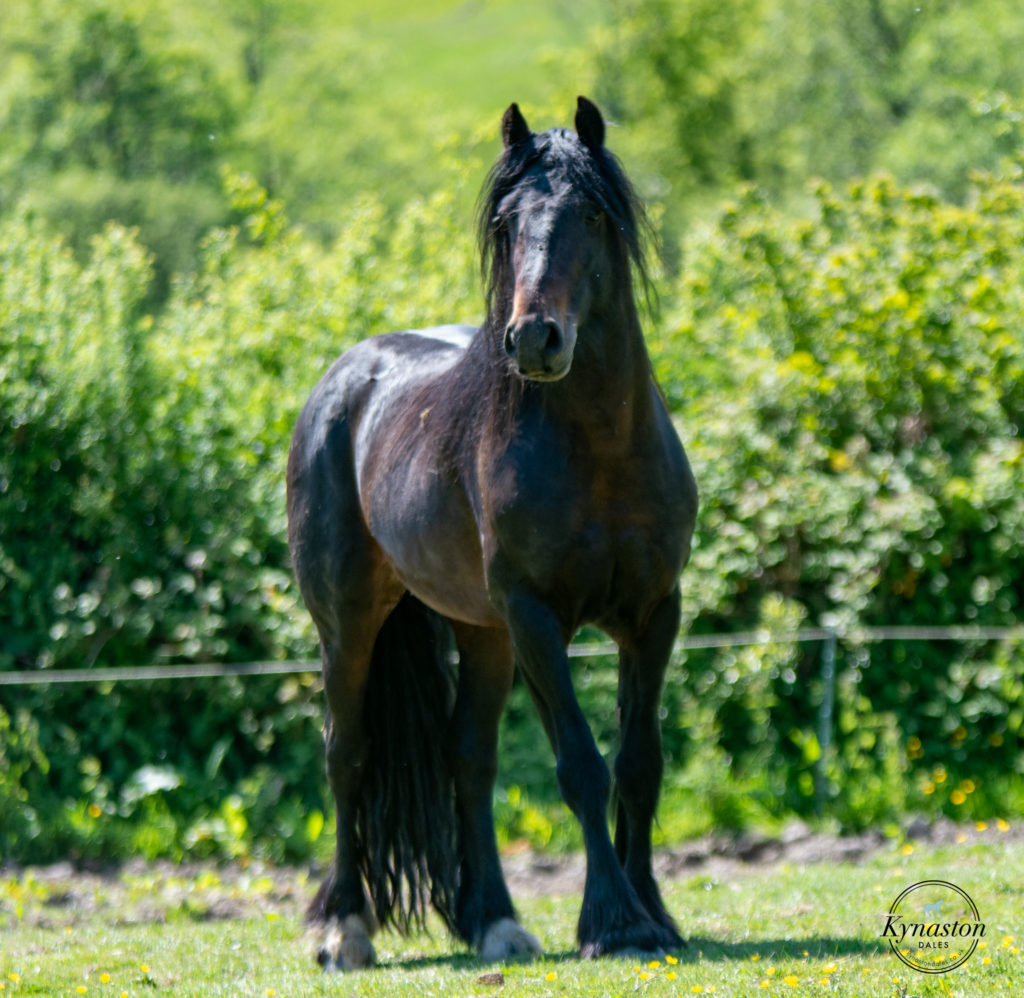History of the Dales pony
Dales Galloway’s made excellent pack ponies they had great strength and endurance, they were specifically bred for the job. An ‘ingot’ of lead known as a ‘pig’ weighing a hundredweight (112lb=8 stones/51kilos) was slung from each side of wooden pack saddles in ‘pokes’ which were sacks made from strong sacking known as ‘harden’ (a pig in a poke?) eleven Galloway’s could move a ‘fother’ of lead which weighed 1ton 2 hundredweight.
These pack ponies worked in gangs of up to 25 ponies, they were well trained and knew their names, none wore a bridle though they did wear muzzles, and this was necessary to prevent them eating the grass at the edge of the lead roads.



This grass was contaminated by the fine powder which fell from the sacks of the lead ore. If eaten it caused the ponies to become ‘bellond’ an incurable form of lead poisoning.
In the years before roads were laid these tough ponies covered up to 200 miles a week under heavy burdens moving over difficult terrain at a good speed. The packhorse men rode the pony at the back, the front pony often wore a bell which could be heard for miles around when weather conditions were calm. These men had a distinctive dress, wearing a thick grey woollen ‘Hodden’ coat, long woollen stockings, knee breeches, a ‘beaver’ hat (these hats were made from rabbit skin at Masongill near Ingleton North Yorkshire) and often clogs


These pack pony men did not mix with ‘drovers’ but preferred to have their own places to call. They had to sleep rough on route and carried onions, oatmeal and cheese to see them through until they reached the next Inn. Sometimes the ponies were connected to each other by plaiting a loop into the tail for the halter of the pony behind to be tied. Salt was regularly carried and often bartered against wool cheese and butter.The coming of the turnpike roads and the railways diminished the widespread use of pack ponies. Inn’s reverted to farms and the sound of the packhorse bell was to be heard no more.
Galloway’ was used in those days to describe a pony or cob commonly seen on the farms it was a ‘maid’ of all work. m‘Git in t’owd gallowa’ a farmer would say to his son when some particular hard task had to be undertaken. The type of pony commonly used by the packhorse men was that now known as the Dales standing around 14.2hh it was larger than the Fell. These Dales cobs were sturdy and compact exceptionally strong for their size and able to thrive on meagre rations. Carrying up to 25st they would happily cover 12 –20 miles a day.

Breeding standards
General: A strong, Active pony full of quality and spirit.
Height: The preferred height range is 14 hands to 14.2 hands ( 142.2 cm – 146.2 cm )
Head: Neat and ponylike. Broad between the eyes, which should be bright and alert. Pony ears slightly incurving. Long foretop of straight hair down the face
Neck: Strong and ample length. Stallions should display a bold outlook with a well arched crest. Throat and jaws clean cut. Long flowing mane.
Shoulders: Well laid, Long, sloping shoulders with well developed muscles. withers not too fine.
Body: short-coupled and deep through the chest, with well-sprung ribs.


Hindquarters: Deep, Lengthy and powerful. Second thighs well developed and very muscular. Tail well set on, not high, with plenty of long straight hair reaching the ground.
Hocks: Broad, flat and clean. Well let down with plenty of dense flat bone below.
Forearms: Set square. Short and very muscular with broad well developed knees.
Feet, legs and joints: The very best of feet and legs, with flexible joints showing quality with no coarseness. The cannons should display 8″- 9″ ( 2o.3cm – 22.9cm) pf flat flinty bone and well defined tendons. Pasterns should be nicely sloping and of good length. Ample silky feather on the heels. Large, round feet open at the heels with well developed frogs.